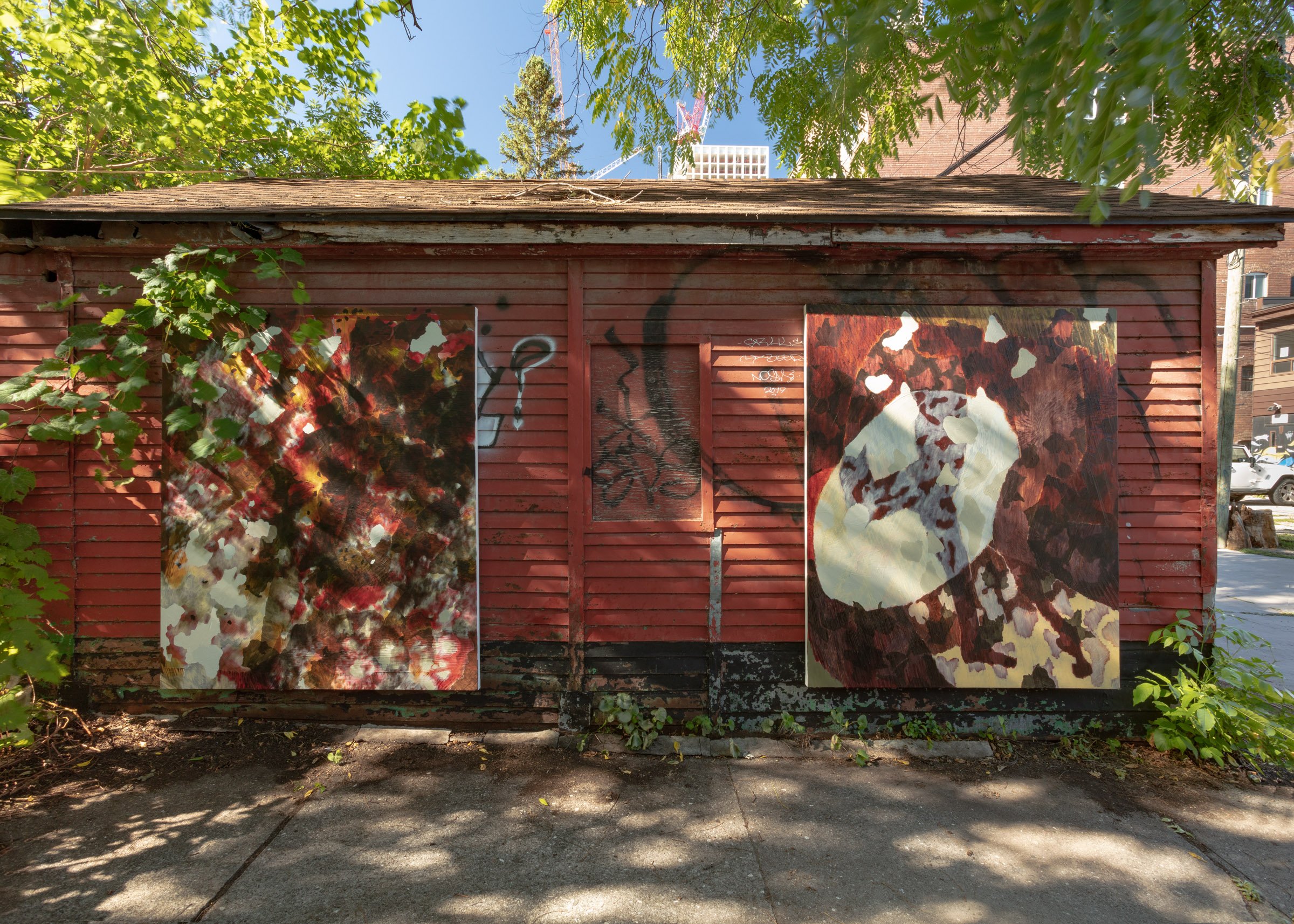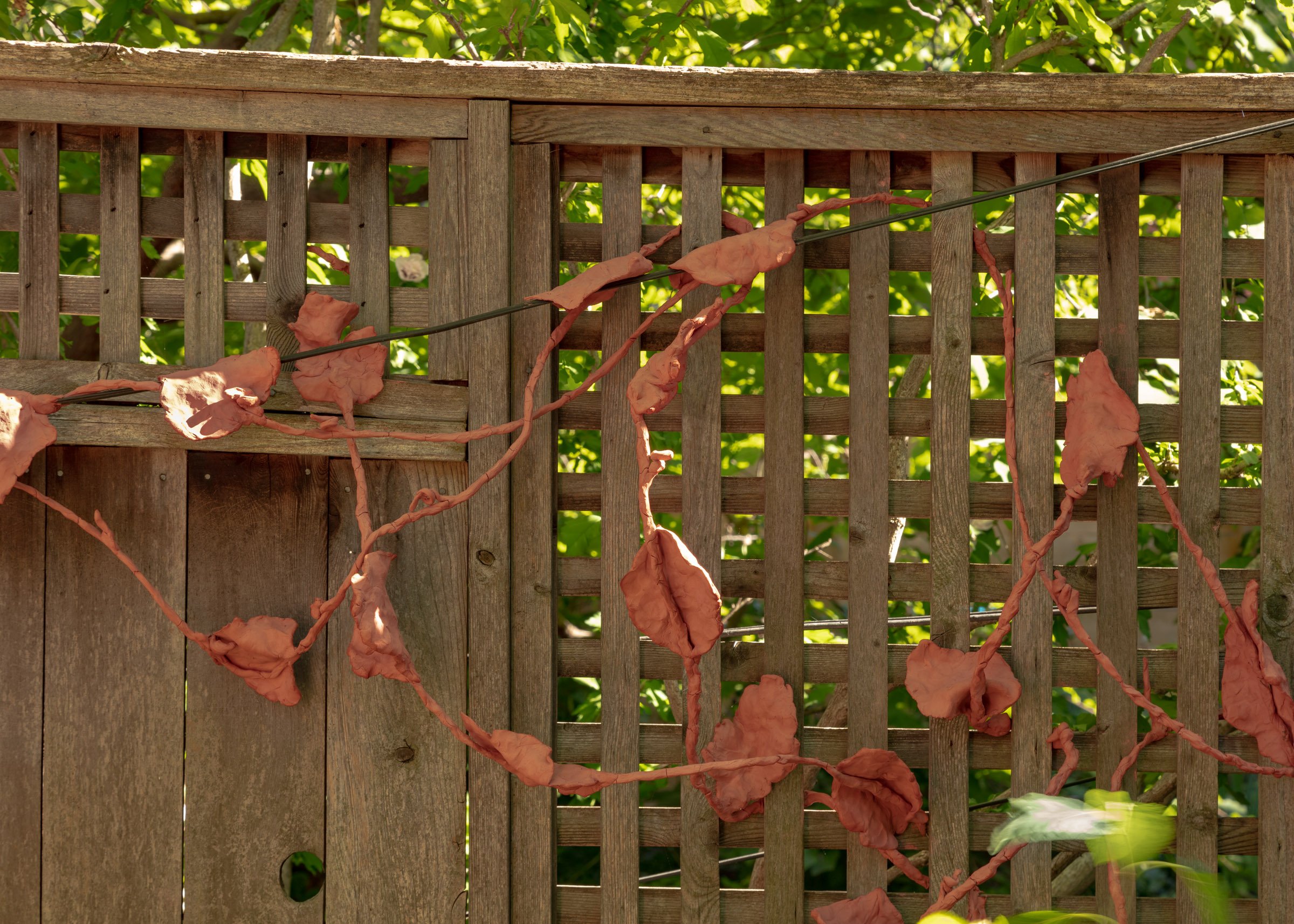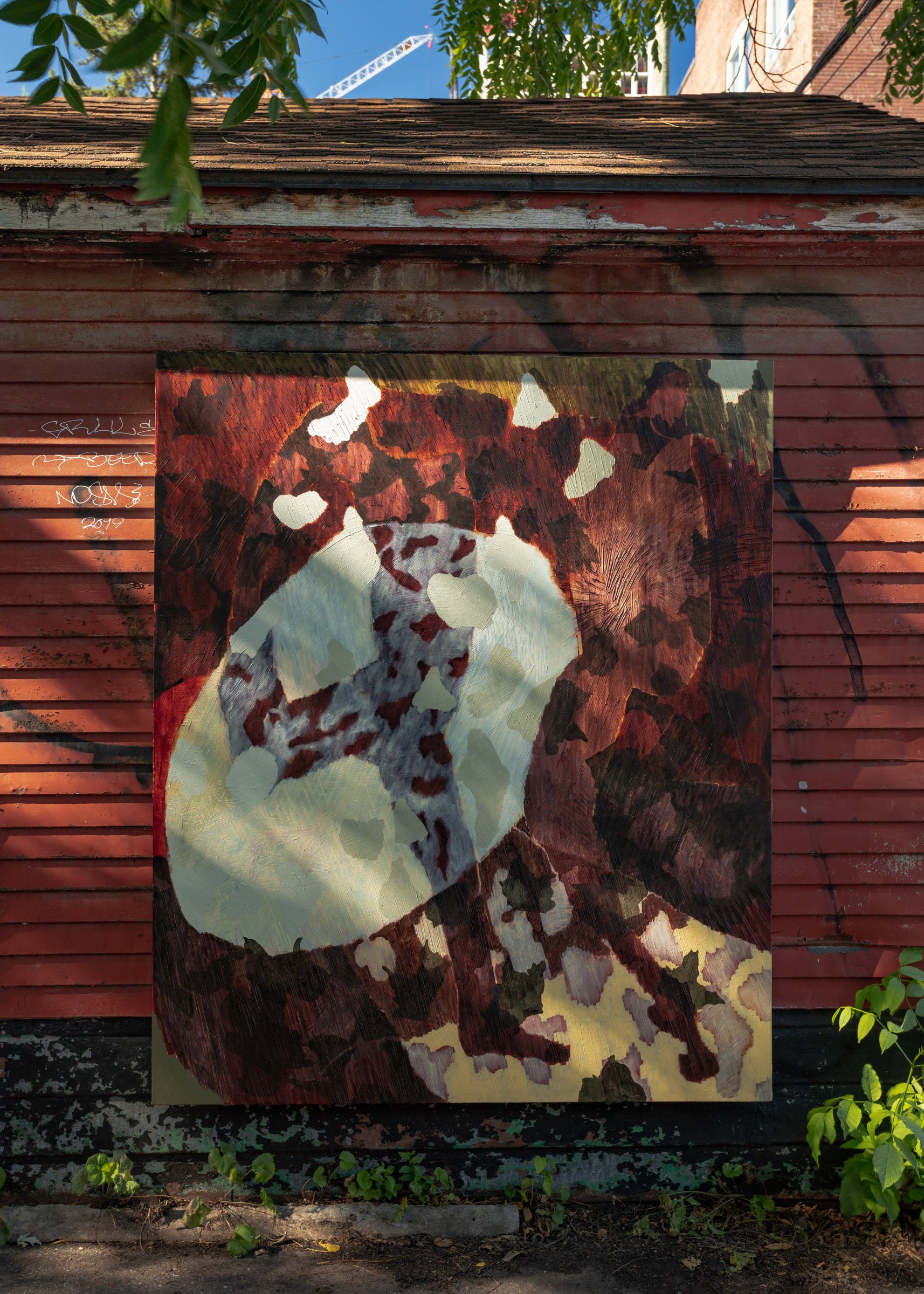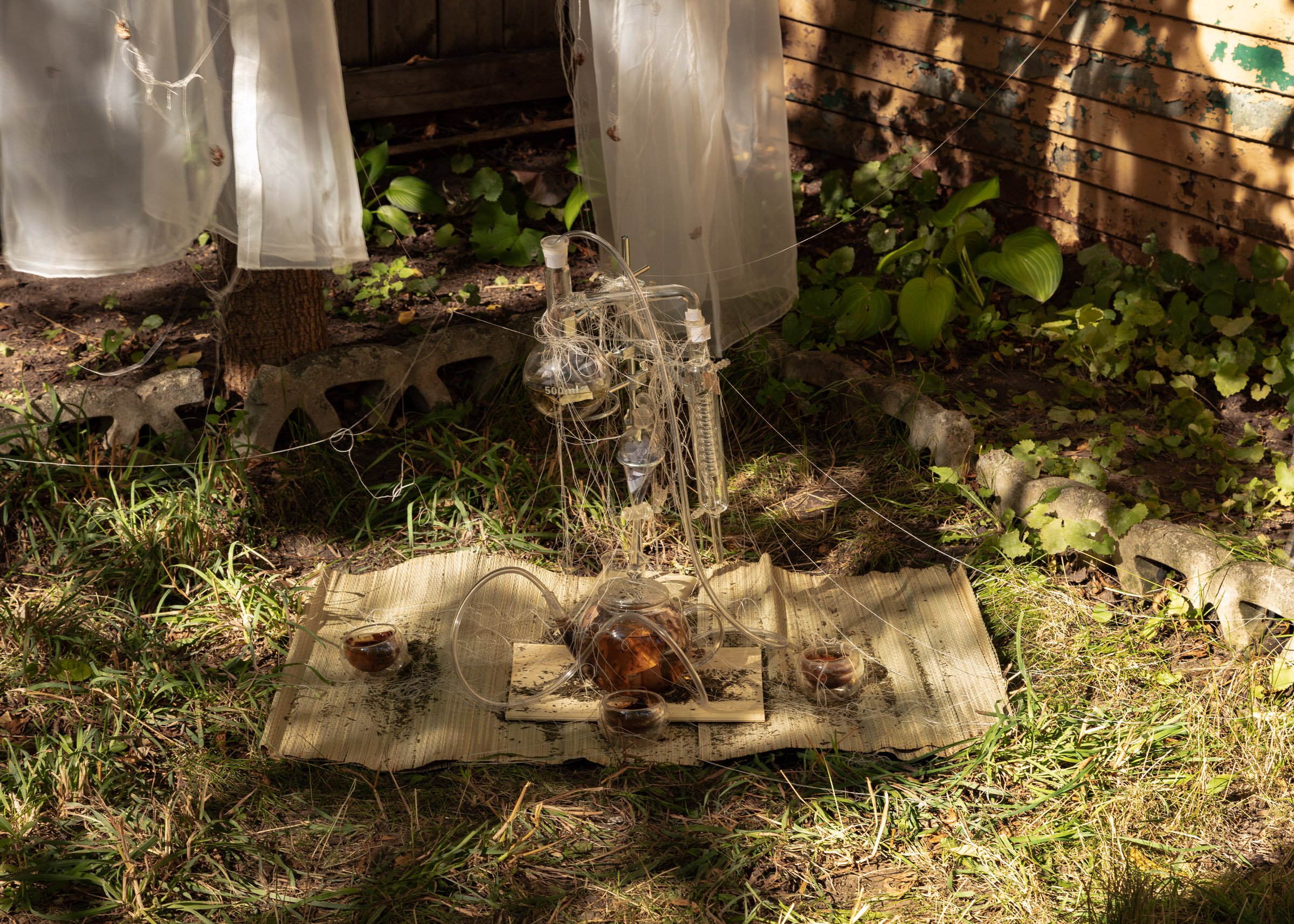Volume IV, September 1st, 2022
Marli Davis, Derek Liddington, Sarah Zanchetta
Garden Variety Volume IV brought together new works by Marli Davis, Derek Liddington, and Sarah Zanchetta that explored how familial, cultural, and ecological knowledge circulates across generations through ritual, plant life, bodily intuition, and the material labour of care. Staged entirely outdoors in a residential backyard, the exhibition invited site conditions—sunlight, wind, soil, and structural irregularities—to become active collaborators in the presentation and evolution of each work. Clay vines cracked in the sun, textiles fluttered in the wind, and tea slowly steeped beneath tree canopies. The exhibition embraced environmental influence as integral to the artwork, allowing wind, dirt, insects, and animals to contribute to their materiality and meaning.
Marli Davis contributed two installations that approached inheritance as both biological and ceremonial. In DNA: Primordial Secretions, Ancestral Entanglements – 温泉, a cocoon-like structure hung from a tree, its gauzy tendrils extending into glass jars filled with steeped tea. Constructed from tulle, thread, and preserved DNA samples, the work evoked hereditary transmission as a slow, entangled process of fermentation, extraction, and transformation.
Her second installation, Laboratory for Heirlooms – A Hybridized Tea Ceremony – 茶道, examined the hybridization of ritual and biology, asking: Is culture passed down through ceremonial practice or encoded in our DNA? Drawing from Japanese funerary symbolism and the life cycle of cicadas, the work staged a tea ceremony in scientific glassware, blurring the line between embodied tradition and clinical extraction. Here, loss is met with a form of regenerative cultural autonomy, where inherited knowledge is not simply preserved but metabolized and remade.
Derek Liddington presented two paintings and one sculptural installation that traced familial masculine intimacy through layered acts of recollection. The paintings—Dad and I talked the entire drive about rust and flesh... and Dad talked the entire drive about cars and sex...—translated autobiographical memory into gestural abstraction, using textured, weatherworn surfaces to reflect the unresolved push and pull of vulnerability and restraint.
His sculptural work, My son and I, remembering together..., consisted of handmade clay vines coiled along a backyard fence. Produced with his young son, the piece responded directly to the site’s architecture and temporal conditions, embedding familial memory into the rhythm of collaborative making. Recalling a story Liddington’s father once told him about grapevines in his great-grandfather’s backyard, the act of sculpting vines with his son became a gesture of intergenerational transmission, translating inherited narrative into shared form. The vines dried and cracked in the sun, indexing both their material fragility and the porous, evolving nature of remembrance.
Sarah Zanchetta’s you left me in a ditch: unaware, uncared for, unknown was a large stitched textile stretched taut across a wooden frame and installed in the centre of the garden—its scale and placement evoking the forgotten centrality of plant knowledge in everyday life. Poison hemlock—rendered in shades of green, red, and beige—snaked across the fabric like a warning system, delicate but insistent. Some threads were dyed to mimic root systems or veins—subtle echoes of the underground and unseen structures that sustain life, yet are often ignored or misread. The work highlighted how, in Toronto, most people lack even basic plant knowledge—a stark contrast to earlier generations who maintained a more immediate and intuitive relationship with their environment, especially when the species in question is toxic, untamable, or historically misused. Installed beside actual wild growth, Zanchetta’s work folded careful research into sensory attention, proposing that forgotten knowledge might be recovered through slowness, sensory attention, and care.
Together, the works in Volume IV traced how knowledge circulates across generations through embodied acts shaped by place, layered, responsive, and impermanent. Liddington’s cracked clay vines, Davis’s installations of steeped tea and preserved DNA, and Zanchetta’s embroidered poison hemlock each staged materially distinct strategies of inheritance: translating memory into shared form, hybridizing tradition with biology, and stitching lost knowledge back into the land.
Documentation by LF Documentation














